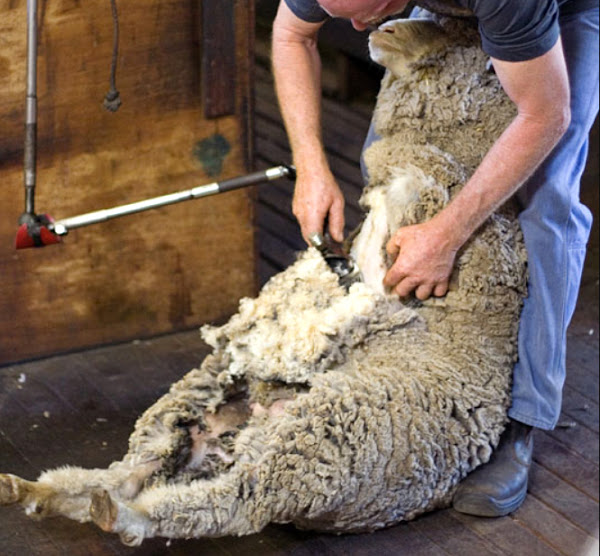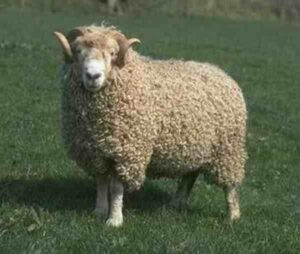Sheep shearing is very necessary for the health and happiness of your sheep. Although shearing a sheep is actually a dirty, sweaty and tiring job, but at the same time it is also an extremely rewarding job. By the way, it is very important to learn more about sheep shearing, otherwise you could destroy the wool, stress or even injure the animal.
Actually sheep shearing is the process by which the woollen fleece of a sheep is cut off. Each adult sheep is generally shorn once a year. And most often the annual shearing occurs in a shearing shed (where sometimes hundreds of sheep or even more are shorn daily).
Sheep are generally shorn in all seasons, depending on the climate, management requirements (and also the availability of a woolclasser and shearers). The rams can be shorn at any time, but the ewes are generally shorn prior to lambing. But it’s not recommend to shear a sheep before or during winter. In some places, sheep shearing is considered as a sport with competitions held around the world.
However, sometimes it can be very difficult to find someone for your sheep shearing process. You can consider doing the process yourself. If you are new in this process, here we are describing more about how to shear a sheep.
Sheep Shearing Process
You can call an experienced sheep shearer (it will cost you some money). If you are new in this process and want to do everything yourself, then follow this guide. Here we are describing more information about sheep shearing.
Get the Sheep Shearing Equipment
It is very important to have good quality shearing equipment. Good quality shearing equipment will actually make the shearing process much easier and safer for both of you and your animals.
Electric cutters are most widely used today. Exact price can vary depending on the area. So, please visit your nearest sheep shearing equipment supply stores for having more information.
Herd the Sheep Into a Pen
Before starting to shear, you should round up and gather the sheep into a pen. And if possible, you can consider separating the sheep into groups. You can keep the lambs, ewes, rams and the yearlings separated from each other. And before shearing, don’t allow the sheep to get wet.
It will be good if you don’t give them any food for the day prior to shearing. Doing so will reduce the amount of waste they produce and help to keep the shearing floor clean (it will also minimize their discomfort when rolled on their backs for shearing).
Get the Sheep in Position
Getting the sheep in the correct position is the first step for sheep shearing. There are actually five main positions you will need to use throughout the shearing process. The first position involves gently tipping the sheep over onto it’s back, then propping it’s shoulders between your knees for support.
Belly of the sheep should be exposed and it’s four legs should be in the air. You should always remember, ‘the more comfortable your sheep is during the shearing process, the less it will struggle’. And this will make your shearing job much easier.
Start Shearing
Start shearing your sheep from it’s belly, and the wool on it’s belly is generally the dirtiest and is not valuable for selling. So, the belly of the sheep is the best place to start. Shear the wool from the top of the brisket all the way down to the open flank area by using long, confident blows . You should make your first blow on the right hand side, your second on the left, then shear off the wool in between. You should ensure the first and second belly are set wide enough apart, and this will make the rest of your job easier down the line.

Shear the Inside of the Hind Legs and Crotch
After shearing the belly, it’s time to shear the inside of the hind legs and the crotch. Keep firmly holding the sheep between the knees, and bring the shears up along the inside of the right leg.
And then bring the shears across for removing the wool along the crotch (you should repeat this blow to ensure all the wool is removed). Then run the shears down the inside of the right leg. Here you should be aware about the teats of the ewes. For preventing yourself from shaving the teats off accidentally, it is advisable to cover the teats with your non-dominant hand (left hand in most cases).
Change Position & Shear the Left Hind Leg and Tail
You should change your position, and you need to turn approximately 90 degrees. You need to do this so that your right knee is in front of the brisket and the sheep’s right foreleg is in between your legs and it’s left side is exposed.
Then first shear the wool from the sheep’s left hind leg (starting at the toe and working your way up towards the hind quarters, finishing on the near side of the backbone).
Then shift your right leg a few inches backwards for gaining better access to the sheep’s tail. You need to position the comb of the shears so it will enter the wool at the top of the tail. Make a blow from the top of the tail upwards along the backbone and repeat the process once or twice until you clear all the wool from this area.
Change Position Again and Shear the Chest, Neck & Chin
Place your right foot in between the sheep’s hind legs and your left foot at the base of it’s spine, firmly holding it’s body between your knees. Use your left hand for grabbing the sheep below the chin and stretch it’s head backwards.
Then bring the clippers from the brisket towards the neck, ending your blow just below the sheep’s chin. Continue for making long parallel blows along the left side of the sheep’s neck (ending first beneath her eye and then beneath her ear). Use your left hand for holding the sheep’s ear back, so you don’t nick it.
Left Shoulder Shearing
For having better access to the left shoulder of your sheep, you can shift your weight and maneuver the sheep slightly. Use your left hand for pulling the skin taut, as the skin on the shoulders can be quite wrinkled.
Shear upwards towards the sheep’s left shoulder starting from her left knee, using one or two blows for clearing the wool. For clearing the wool from the inside of the sheep’s left foreleg, you can use this as an opportunity.
Change Position Again & Shear the Back
You can move into the next (4th) position, through sliding the sheep down along your shin until it is lying on it’s right side. You need to keep your right foot between the hind legs of your sheep and your left foot under her shoulder. This position is for long blows, which extend all the way along the sheep’s back.
Make a long straight blow after positioning the shears at the tail of the sheep. Make the blow all the way to the head of the sheep, staying parallel to it’s spine. Continue making these blows along the back until you have gone one blow past the backbone and the entire left side of the sheep is cleared of wool.
Change Position Again for Shearing the Right Side
You need to change the sheep shearing position again for shearing along the right side of the sheep. This is the 5th and final position. You need to swing your right leg around so you are standing upright with the sheep’s nose between your knees.
Then shear along the right side of it’s head, neck and shoulders. You will need to use 3 or 4 separate blows for doing all these. Shear the wool from the right foreleg (from the shoulder to the toe), once the neck and shoulder are sheared and cleared of wool. And then make a series of diagonal blows along the flank of the sheep for clearing the wool from this side.
Then Shear the Right Leg & Hindquarter
This is the last step, and in this step you will shear the wool from the right leg of the sheep and it’s hindquarters. Shift your right foot forward slightly. You need to do this so you can reach and place your left hand on the right flank of the sheep, applying firm pressure.
Doing this will force the sheep for keeping it’s leg straight (while also stretching the skin). Shear in a curved motion from the flank of the sheep to it’s right hind leg. Then make the final few blows when the leg is cleared for clearing the last of the wool from it’s hindquarters. All done! Congratulations! You have successfully sheared your sheep. You also need to clean the fleece, and this also a part of sheep shearing.
Skirt & Roll the Fleece
You will need to skirt and roll the fleece once your sheep has been sheared. Actually skirting means removing any dirty or ‘incidental’ wool which is not valuable. Place the fleece flesh-side down on a flat table or other surface for skirting the wool. Spread the fleece all out it it forms a single layer. Then remove any dirty or contaminated wool from the outside edges of the fleece. Any off-colored wool, tags or matted wool should be removed.
After skirting, you can roll the fleece. You can fold the long sides of the fleece towards the center, then roll the fleece from one end to the other (so the flesh-side is facing outwards). Now the roll can be easily transported for sale. Good luck!





